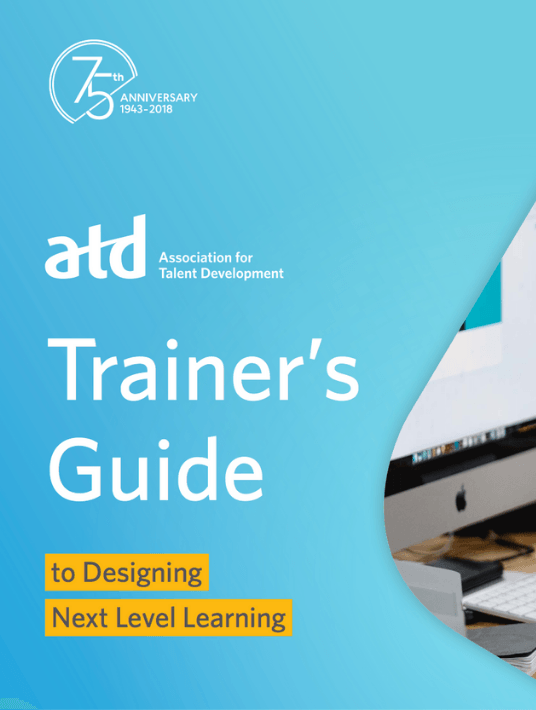The Many Required Hats Of The Instructional Designer
As a facilitator of ATD’s (ID) courses, I see firsthand the varied population of Instructional Designers. These talent development professionals come from a wide range of organizations, industries, and locations. Many have an educational background in with degrees to back up their knowledge base, while others share stories of how they “fell” into the ID world.

Regardless of their journey, these professionals come to better themselves not only on an individual professional level, but more importantly on a larger organizational level. They come to explore new ideas in design, emerging technologies, and design tools, along with daring to adapt components to meet organizations’ unique needs. They hear from fellow colleagues about what works in organizations in terms of needs assessments, team structures, and dynamics, and they pulse-check if their evaluation strategies are on-point. But ultimately, these Instructional Designers are there for their learners. They want their ID work to be relevant and meet (or exceed) the needs of their learners.
Limitless Growth And Opportunity
Instructional Design has evolved over the past couple of decades, and there is an ongoing need to promote the value and understanding of the ID professional role in talent development. ATD facilitator and Instructional Designer Kimberly Devlin states, “There is limitless growth in the profession. Instructional Designers can challenge themselves within the discipline—create self-paced, face-to-face, and one-on-one courses in addition to eLearning programs.”
She continues, “Or, develop skills in related talent development competencies—performance management, evaluation, coaching, even facilitation—which can all enhance the ID's work. And of course, there are seemingly endless new and existing software options to master so the tools are leveraged to enhance the learning instead of frosting it in technological icing.”
With the multiple competencies that are required of designers, along with varied tasks, we really are the “jack of all trades.”
Speaking firsthand as a facilitator, I know that it can be overwhelming to be asked to create an eLearning module when it is something I have never attempted before, develop an infographic to market the essentials of an upcoming course, or jump on a sales call to provide expert knowledge about a content area.
See this jack-of-all-trades role as an exciting prospect. “If you are asked to ‘do it all,’ view this as an opportunity,” states Kimberly. “Admittedly, project scoping and time management will be critical to balancing your success and your, sanity—but hard deadlines are great motivators for creativity and efficiency.” I couldn’t agree more.
We also see ourselves wearing multiple hats just within the training department. Anyone else out there in this situation? Don’t worry, you are not alone. As Instructional Designer and ATD facilitator Julie Patrick describes it, “ Some people serve as their entire training department, so they need to do it all. Sometimes, this one-person department is a result of an organization realizing that they need training so they begin with one person to see how it goes, and other times, this one-person department happens as a result of a reduction in force.” Talk about opportunities!
This typically leads to the designer being involved with learning initiatives from start to finish. Anecdotally, Julie has heard this happen in several situations. One situation is when people are identified as Subject Matter Experts and are asked to become trainers of the topic. They then need to create supporting materials for their training, so they learn.
Another situation is when people are interested in training and there is an opportunity to serve as an Instructional Designer, so they learn the craft well and are asked to take on additional responsibilities.
I, in fact, was a software implementations project manager who liked mentoring new hires and was asked to facilitate a new hire training sessions and develop job aids to help them remember key points, which then led to new ID and facilitation roles being created to support curriculum management, LMS implementation, and eLearning creation—the story goes on. And my journey isn’t, as many of you know, uncommon.
Upskilling And Challenging Ourselves
So how do we ensure that we not only develop the skill set required as an Instructional Designer, but also continue to challenge ourselves to reach our potential—not only as designers, but also within each of the other roles that come along with it?
Instructional Design is rooted in theories and methodologies that have remained constant over time. While it is important for Instructional Designers to have a solid foundation in these theories and methodologies, it is also vital for us to think critically and stay on top of the current practices, all while preparing for emerging trends.
To reach our highest potential, we must make ongoing education and upskilling ourselves a core focus. A recent ATD research report confirms that there is an urgent need to continually add to our knowledge base through the ongoing development of new skills and competencies required to match the demands of increasingly diverse learners and the evolving learning tools, techniques, and technologies.
“Instructional Designers need to simultaneously apply the learning theories that are core to adult skill development while leveraging newly available tools that are becoming mainstream,” states Kimberly. “With each new design, try to set an intention to include an element that is new to you (such as video editing) to remain relevant.”
It’s not just technologies that are “musts” in the industry. Julie says that business acumen, the ability to influence, and the willingness and ability to collaborate are areas to focus on when it comes to upskilling to increase performance.
Which interestingly is similar to the data we unearthed. Our research states that the skills most important to the role of the Instructional Designer were mostly soft skill–related. More important than having the ID principles and theories down, it is about having the skills to not only listen but also synthesize what is being said. As Julie believes, “Speak the language of the people whom you are working with throughout the organization to illustrate your interest in meeting their needs.”
When I am in the classroom and hear ID participants ask questions, show curiosity, and seek opinions from fellow Instructional Designers to gather new ideas, I observe their skill set growing in front of my eyes.
“Instructional Designers should stop thinking about what you want to tell learners and start thinking about how you feel when you are the learner,” states Kimberly.
Ensure you are designing for your learners’ needs, and the rest will fall into place.









